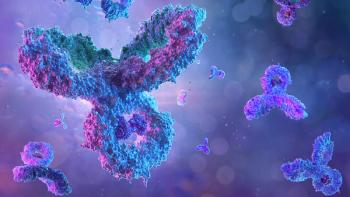
Improving Productivity to Drive Drug Discoveries to Patients
Biomedical researcher shares insights from a career dedicated to advancing therapeutic innovations for unmet medical needs.
Magid Abou-Gharbia, director of the Moulder Center for Drug Discovery Research at the Temple University School of Pharmacy, has spent his biomedical research career working to help patients by discovering drugs that address unmet medical needs.
“When I began my career, there were many diseases that no viable treatment options were available and others whose treatment options were severely limited. Although there has been much progress over the course of my career, there are still many conditions with no treatment; pancreatic cancer and Alzheimer’s are just two examples,” shared Magid. “I realized at a young age that working in the pharmaceutical industry would give me both the means and the opportunity to help patients in need. In addition, teaching and mentoring the next generations has been a passion of mine for most of my professional career. Joining Temple University provided me with an opportunity to take a more active role in this process.”
Abou-Gharbia is scheduled to present a keynote address at CPhI North America in May 2017, addressing the realities of pharmaceutical R&D today and a vision for tomorrow’s improved state. He provided a preview of his conference presentation in an interview with CPhI North America’s event director.
CPhI: Do you agree that the industry needs to increase R&D efficiency so that greater numbers of drugs can be developed to capitalize on the ever-increasing genomic understandings?
Abou-Gharbia: Yes, but it is important that we explore the reasons why this is necessary. In order to treat and, where possible, cure disease, you have to understand what is causing and/or controlling the disease. It is like having a lock that needs to be unlocked-you have to find a key that works. Drug discovery is sort of like making keys for a lock. There are lots of key variations, but very few keys fit a particular lock, and only one will open the lock. Once the right type of key is established, small variations of the key can be made until the key that opens the lock is identified. In the same way, we can screen millions of compounds to find subsets that may be useful, then make small changes to compounds in the subset to identify compounds that may have treatment utility.
The biomolecule involved in the disease, or using the above analogy, the lock, is the target and could be a gene, a protein, an enzyme, or a chemical in the body. I think it would surprise many people to learn while there are many FDA-approved drugs, prescriptions and over-the-counter, fewer than 1600 new molecular entities have been approved in the 79 years since the FDA began requiring drug approval. The vast majority of clinically approved drugs are variations in formulation or delivery methods.
One of the reasons for this is that, until recently, only a small number of targets-around 340 to 350 or so-had been identified. The Human Genome Project, however, increased the number of known drug targets to close to 6000 potential targets. We now have many more disease targets and the opportunities to create drugs for diseases we have never been able to treat before. However, the next big challenge for pharmaceutical scientists is to validate the potential targets. The Human Genome Project and related programs have provided us with a large number of potential targets that are associated with many diseases, but associated is not the same as causative. Target validation-determining if modulating a potential target has a positive impact for a disease or condition-is the next big hurdle in drug discovery. It is a high hurdle and another reason why the drug discovery process is a slow one.
CPhI: What are some of your thoughts about the current regulatory environment and the impact of FDA on drug R&D productivity?
Abou-Gharbia: Given all of the advancements over the years, I believe FDA is overwhelmed by the pace of innovation in the pharmaceutical industry and running rapidly in an effort to keep up. That said, FDA has come a long way. The Prescription Drug User Fee Act (PDUFA) and Generic Drug User Fee Act (GDUFA) facilitated tremendous progress in reducing drug approval backlogs by increasing the resources available for the process.
One of the reasons drug approval takes so long is FDA reviews both efficacy and safety. Side effects, in particular, can take a long time to study. Statistical analysis and other computational tools may provide an opportunity to increase the pace of review by providing a more rapid analysis of efficacy and safety data, but the jury is still out on how much of an impact this will have. A version of this, of course, is already in place with the breakthrough drug approval process and other accelerated drug approval processes.
FDA also has an important role in setting policies that impact various aspects of the pharmaceutical industry. These policies need to be adjusted from time to time. Many pharmaceutical companies, for example, have focused on building a portfolio of oncology drugs because the bar for approval is lower in this area. Generally speaking, FDA only requires a drug maker to demonstrate that a cancer drug prolongs life by two to three months. Simply put, the chance of success within the oncology arena is higher.
In other areas, the standards for approval are higher, which raises the bar for approval of a new drug. This can result in a substantial decrease in innovation, as the risk of failure is higher. The efficacy and safety standards for cardiovascular drugs, for instance, are more difficult to meet and time-intensive. As a result, the industry has moved away from research in this area.
One area of particular concern is antibiotic innovation. FDA changed the guidelines for approval of new antibiotics in 2000, making it much more difficult for companies to commercialize new antibiotics. In response, many pharmaceutical companies, including most of Big Pharma, abandoned antibiotic drug development, creating a potentially dangerous problem as bacteria become increasingly resistant to the antibiotics in current use. My understanding is that FDA is reviewing their policies regarding the antibiotic review and approval process. I am very happy to see this, as I believe we will need the industry to once again focus on this area.
CPhI: In your view, what are the keys to improving drug R&D productivity?
Abou-Gharbia: Big Pharma is, of course, acquiring smaller companies with desirable pipelines to compensate for their lack of R&D productivity. I believe, however, that the key to true R&D productivity improvement is to spend the needed resources early in the discovery process. In my view, the motto of drug discovery should be, If you're going to fail, fail early and fail cheaply.
There are many innovative technologies and methods being used to help increase the odds of success. Fully characterizing a drug candidate early in the process to identify and address potential challenges is one way to limit costs and improve productivity. For instance, if I’m interested in treating a disease in the brain, and I develop a molecule that works well in the lab, but when given to patients, the molecule cannot cross the blood-brain barrier, then the molecule is useless. Effective characterization early in the discovery process could identify this kind of problem and a solution could be developed. This would save substantial time and money. Modeling and predictive analytical technologies have come a long way and have been a great help in advancing drug discovery approaches that help to increase the odds of success.
CPhI: Let’s wrap up by talking about the academic drug discovery model. How and why is it working?
Abou-Gharbia: Two factors have advanced the academic drug discovery model. First, as drug discovery became more and more challenging, resulting in slimmer drug development pipelines, the industry laid off a lot of people, mostly as a result of mergers and acquisitions. This greatly depressed internal drug discovery and development within industry. The second factor that facilitated the advancement of the academic drug discovery model was the Bayh-Dole Act passed in 1980.
The important change made by Bayh-Dole related to the ownership and licensing of discoveries made with federal funding. Before the Bayh-Dole Act, federal research funding contracts and grants obligated inventors to assign inventions they created using federal funding to the federal government and exclusive licenses to the patents were not allowed. The Bayh-Dole Act of 1980 permits a university, small business, or nonprofit institution to own an invention generated with federal funding and to license them exclusively. It is easy to see how this legislative change, coupled with drastic reductions of R&D resources within pharmaceutical companies, led to an explosion of drug discovery and development work being conducted within universities.
Universities also don’t have the same market and financial pressures that pharmaceutical companies have and can therefore explore rare diseases or areas where success might be more difficult to achieve. Most pharmaceutical companies don’t conduct research on disease with smaller patient populations.
Many universities collaborate directly with industry and some are partially funded by an industry sponsor, but there are also people like myself who come out of industry, move to a role within a university, and effectively serve as a bridge between industry and academia.
CPhI: Thanks so much for talking with me, Magid. I’m looking forward to learning more about your work during your presentation, “Discovery of Innovative Therapeutics: Today’s Realities and Tomorrow’s Vision” at CPhI North America, which will be held May 16–18, 2017, in Philadelphia, PA.
Magid Abou-Gharbia, PhD, FRSC is the associate dean for research, Laura H. Carnell Professor of Medicinal Chemistry, and director of the Moulder Center for Drug Discovery Research at the School of Pharmacy, Temple University, Philadelphia, PA. He is responsible for setting and implementing School of Pharmacy research strategies to promote the school’s research and entrepreneurial enterprise. Prior to joining Temple University in 2008, Magid spent 26 years at Wyeth Pharmaceuticals, where he was senior vice-president and head of chemical and screening sciences. He received a bachelor or science degree in pharmacy and a Master’s degree in medicinal chemistry from Cairo University, and a doctorate in organic chemistry from the University of Pennsylvania.
Newsletter
Stay at the forefront of biopharmaceutical innovation—subscribe to BioPharm International for expert insights on drug development, manufacturing, compliance, and more.





